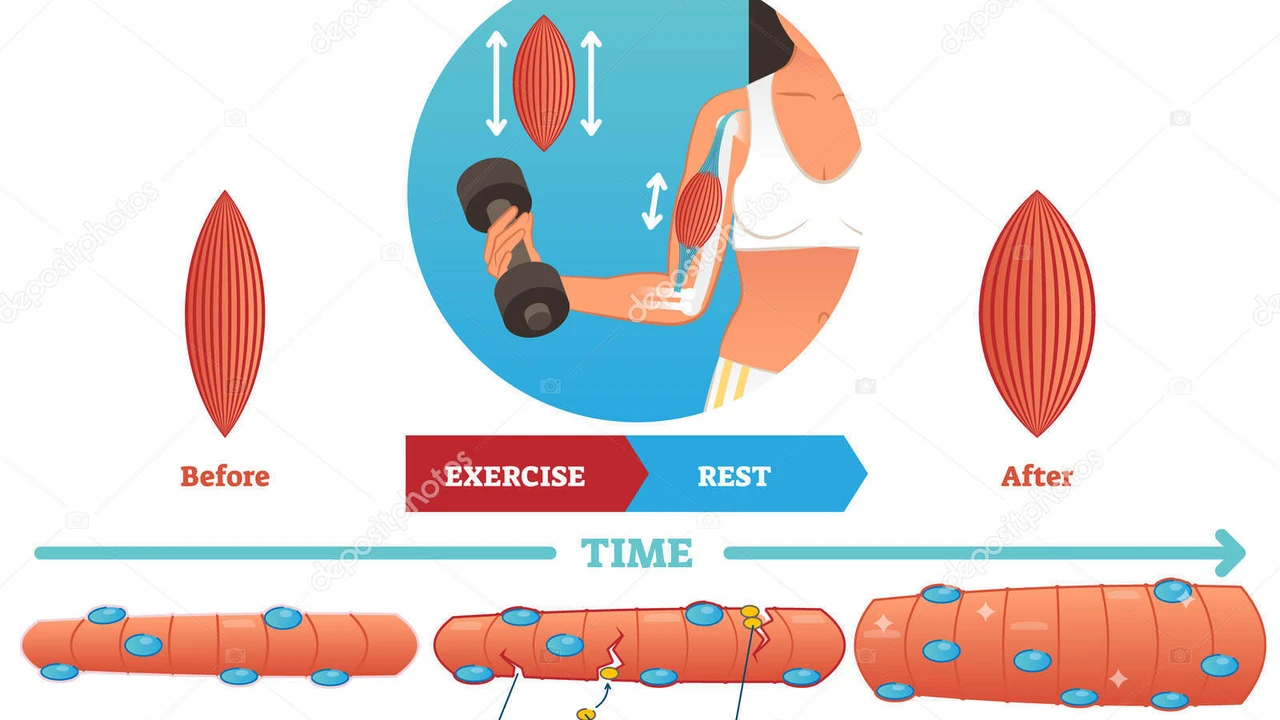The Benefits of Intermittent Fasting: A Beginner's Guide

normal text Kettlebells are versatile tools for strength and cardio training. This article explains the different types of kettlebells and their uses. Choose the right kettlebells to meet your fitness goals and enhance your workouts.
Kettlebell Types and Uses: A Comprehensive Guide
Kettlebells have surged in popularity as a staple in gyms and home workout spaces alike. Their unique design and versatility make them excellent for a wide range of exercises, from strength training to cardio and functional movements. However, with so many different types of kettlebells available, it can be overwhelming to choose the right one for your needs. This guide will break down the key differences between various kettlebell types, their ideal uses, and even recommend some specific models to consider.
Cast Iron Kettlebells: The Classic Strength Training Choice
Cast iron kettlebells are the most common and traditional type of kettlebell. They are made from a single piece of cast iron, providing excellent durability and a consistent weight distribution. This makes them ideal for classic kettlebell exercises like swings, goblet squats, cleans, and presses.
Pros:
- Durability: Extremely durable and can withstand years of use.
- Weight Consistency: Consistent weight distribution for balanced and controlled movements.
- Affordability: Generally more affordable than other types of kettlebells.
- Wide Availability: Widely available from various retailers.
Cons:
- Handle Finish: Some cast iron kettlebells have a rough handle finish that can be uncomfortable for prolonged use. Look for models with a smooth or powder-coated finish.
- Rusting: Can rust if not properly maintained.
Recommended Products:
- Rogue Fitness Kettlebells: Known for their high quality and durability, Rogue Fitness cast iron kettlebells are a favorite among serious lifters. The price range is typically from $30 (for lighter weights) to $200+ (for heavier weights).
- CAP Barbell Kettlebells: A more budget-friendly option, CAP Barbell kettlebells are suitable for beginners and those looking for a basic cast iron kettlebell. Prices generally range from $20 to $150 depending on the weight.
Competition Kettlebells: Engineered for Performance and Consistency
Competition kettlebells, also known as pro-grade kettlebells, are specifically designed for competitive kettlebell lifting. They have a standardized size and shape regardless of weight, with a consistent handle diameter and window size. This allows athletes to seamlessly transition between different weights without having to adjust their technique.
Pros:
- Standardized Size and Shape: Consistent dimensions across all weights for seamless transitions.
- Ergonomic Handle: Designed for comfortable and secure grip during high-repetition exercises.
- Durability: Built to withstand the rigors of competitive lifting.
Cons:
- Higher Price: More expensive than cast iron kettlebells.
- May Not Be Necessary for Casual Use: The standardized size and shape might not be a significant advantage for casual users.
Recommended Products:
- Kettlebell Kings Competition Kettlebells: Kettlebell Kings are a leading brand in competition kettlebells. Their bells are made from high-quality steel and feature a comfortable, ergonomic handle. Prices range from $100 to $300+.
- Rep Fitness Competition Kettlebells: Another reputable brand, Rep Fitness competition kettlebells offer excellent quality and performance at a slightly more affordable price point. Expect to pay between $90 and $250.
Adjustable Kettlebells: Space-Saving and Economical for Home Gyms
Adjustable kettlebells allow you to change the weight of the kettlebell by adding or removing weight plates. This makes them a space-saving and economical option for home gyms, as you only need one kettlebell to perform a variety of exercises at different weights.
Pros:
- Space-Saving: Replaces multiple fixed-weight kettlebells.
- Economical: More affordable than buying a full set of fixed-weight kettlebells.
- Versatile: Allows you to easily adjust the weight to suit different exercises and fitness levels.
Cons:
- Bulkier Design: Can be bulkier and less compact than fixed-weight kettlebells.
- Weight Distribution: Weight distribution may not be as consistent as fixed-weight kettlebells.
- Durability Concerns: Some adjustable kettlebells may be less durable than fixed-weight models.
Recommended Products:
- PowerBlock Adjustable Kettlebell: PowerBlock is a well-known brand in adjustable fitness equipment. Their adjustable kettlebell is easy to use and features a durable design. Prices range from $150 to $300.
- Bowflex SelectTech 840 Kettlebell: Bowflex offers a popular adjustable kettlebell with a user-friendly dial system for easy weight changes. Expect to pay around $200.
Vinyl-Dipped Kettlebells: Comfort and Floor Protection
Vinyl-dipped kettlebells are cast iron kettlebells coated in a layer of vinyl. This provides a more comfortable grip and helps to protect your floors from scratches and damage. They are a good option for home workouts where you want to minimize noise and protect your flooring.
Pros:
- Comfortable Grip: The vinyl coating provides a more comfortable grip than bare cast iron.
- Floor Protection: Protects your floors from scratches and damage.
- Reduced Noise: Dampens noise during workouts.
Cons:
- Less Durable Coating: The vinyl coating can be susceptible to tears and scratches over time.
- Can Be Slippery When Sweaty: The vinyl coating can become slippery when your hands are sweaty.
Recommended Products:
- Yes4All Vinyl Coated Kettlebells: Yes4All offers a wide range of vinyl-coated kettlebells at affordable prices. Prices typically range from $25 to $150 depending on the weight.
- Amazon Basics Vinyl Kettlebells: A budget-friendly option, Amazon Basics vinyl kettlebells are a good choice for beginners. Expect to pay between $20 and $100.
Ceramic Coated Kettlebells: Premium Feel and Grip
Ceramic coated kettlebells are a newer type of kettlebell that features a ceramic coating on the handle. This coating provides a superior grip, even when your hands are sweaty, and is also more durable than vinyl. These kettlebells are often preferred by more experienced lifters who prioritize grip and performance.
Pros:
- Superior Grip: Excellent grip, even when sweaty.
- Durability: More durable than vinyl coatings.
- Premium Feel: Provides a high-quality feel.
Cons:
- Higher Price: More expensive than cast iron and vinyl-dipped kettlebells.
Recommended Products:
- Rogue Cerakote Kettlebells: Rogue Fitness offers ceramic coated kettlebells as an upgrade option. These bells are known for their excellent grip and durability. Prices range from $40 to $250+.
Kettlebell Handle Comparisons: Finding the Right Grip
The handle is a crucial aspect of any kettlebell. Different handle types cater to different preferences and training styles. Here’s a quick comparison:
- Cast Iron Handles: Can be rough. Look for smooth or powder-coated finishes.
- Competition Handles: Standardized size and shape, ergonomic for high-rep work.
- Vinyl-Dipped Handles: Comfortable but can be slippery when sweaty.
- Ceramic Coated Handles: Superior grip, even when sweaty.
Choosing the Right Kettlebell Weight for Your Fitness Level
Selecting the appropriate kettlebell weight is essential for safety and effectiveness. Here’s a general guideline:
- Beginners (Women): 8-12 kg (18-26 lbs)
- Beginners (Men): 12-16 kg (26-35 lbs)
- Intermediate (Women): 16-20 kg (35-44 lbs)
- Intermediate (Men): 20-24 kg (44-53 lbs)
- Advanced (Women): 24+ kg (53+ lbs)
- Advanced (Men): 32+ kg (70+ lbs)
It’s always better to start with a lighter weight and gradually increase as you get stronger. Focus on proper form and technique to avoid injuries.
Kettlebell Training Scenarios: Which Type is Best?
Let's consider a few different training scenarios to help you decide which type of kettlebell is the best fit for your needs.
- Home Gym with Limited Space: An adjustable kettlebell is ideal for saving space.
- Group Fitness Classes: Vinyl-dipped kettlebells are a good choice for protecting floors and reducing noise.
- Serious Strength Training: Cast iron kettlebells are a durable and affordable option for building strength.
- Competitive Kettlebell Lifting: Competition kettlebells are essential for standardized performance.
- Hybrid Training (Strength and Cardio): A combination of a cast iron kettlebell and an adjustable kettlebell can provide versatility.
Essential Kettlebell Exercises for All Fitness Levels
Here are a few essential kettlebell exercises to get you started:
- Kettlebell Swings: Works the posterior chain (glutes, hamstrings, and back).
- Goblet Squats: Strengthens the legs and core.
- Kettlebell Cleans: A full-body exercise that builds power and coordination.
- Kettlebell Presses: Strengthens the shoulders and upper body.
- Turkish Get-Ups: A challenging and effective full-body exercise that improves stability and coordination.
The Future of Kettlebells: Innovations and Trends
The kettlebell market is constantly evolving, with new innovations and trends emerging all the time. Some of the trends to watch include:
- Smart Kettlebells: Kettlebells with built-in sensors that track your reps, weight, and other data.
- Ergonomic Handle Designs: New handle designs that improve grip and comfort.
- Sustainable Materials: Kettlebells made from recycled materials or other sustainable sources.
By understanding the different types of kettlebells and their uses, you can choose the right kettlebells for your fitness goals and enjoy the many benefits of kettlebell training.
:max_bytes(150000):strip_icc()/277019-baked-pork-chops-with-cream-of-mushroom-soup-DDMFS-beauty-4x3-BG-7505-5762b731cf30447d9cbbbbbf387beafa.jpg)






